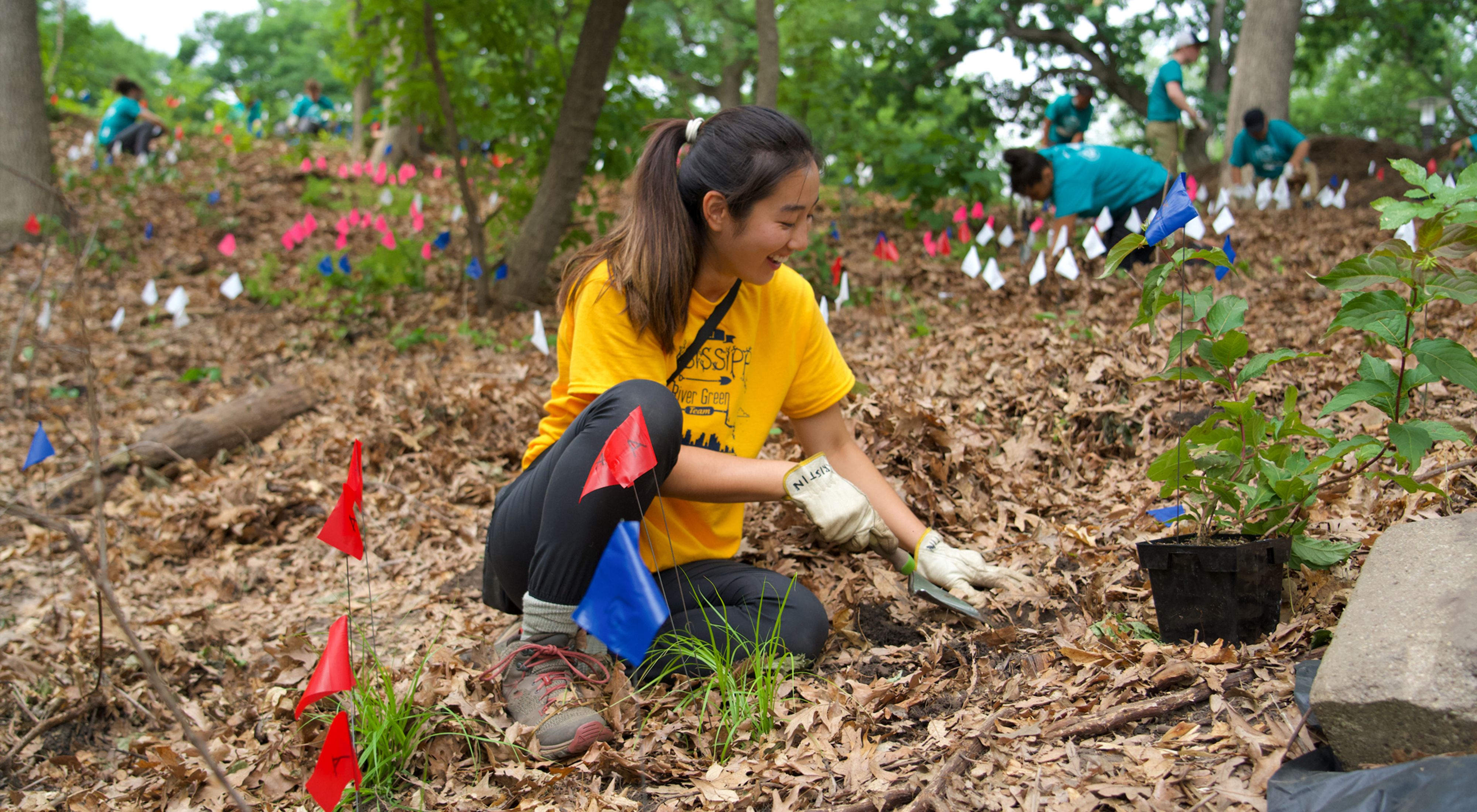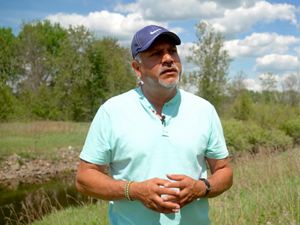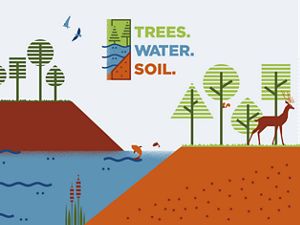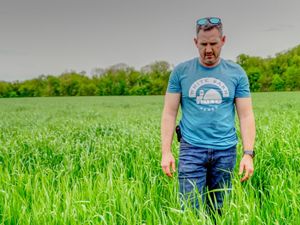Mississippi River Green Team
Growing green careers, improving the urban watershed and creating environmental advocates.
Though the weather was hot and humid, it didn’t slow down the teenage members of the Mississippi River Green Team, who worked diligently while trading friendly, funny banter. The team was completing a project in Theodore Wirth Park in Hennepin County, transforming a hillside that was overgrown with buckthorn and other invasive species into an aesthetically pleasing, landscaped area dominated by native plants.

On such a muggy day, the work could easily be described as grueling, but the team approached it with enthusiasm and joy. The Green Team, a group made up of about 18 teenagers primarily from north and northeast Minneapolis, is a two-year conservation employment program jointly managed by the Mississippi Watershed Management Organization (MWMO) and the Minneapolis Park and Recreation Board (MPRB). The MWMO is responsible for management of about 40 square miles of land that drains to the Mississippi River as it flows through the Minneapolis metropolitan area.
Their mission is to ensure a clean river, and, because rainwater picks up different pollutants—like oil, gas, heavy metals, yard waste, salt and phosphorus—on its way to the nearest local water body, a significant focus of MWMO’s work is diverting stormwater to green infrastructure so that the water can be filtered before it enters the river.
Green infrastructure, which includes projects like rain gardens, bioswales and plantings, facilitates the absorption of water into the ground so it can be used by plants instead of going immediately into the river.
Michaela Neu, youth and community outreach specialist with the MWMO, explains: “We support any practice that captures, filters, infiltrates or allows the reuse of rainwater.”


For the past 14 years, the Green Team has helped advance the MWMO’s mission. Neu says, “The primary goal of the Green Team is employing youth to improve the local environment, maintain green infrastructure and learn about the environmental world and potential pathways to environmental fields.”
Long term, the MWMO hopes to foster greater stewardship of the watershed through grants, capital improvements, outreach and education. “Ultimately, we’re interested in building community capacity,” she says.
Quote: Michaela Neu
These youth are inroads to their family and their communities. They can teach them about the environment, become advocates for the environment and hopefully, in the long run, we can diversify the environmental workforce.

The Green Team’s project at Theodore Wirth Park offers an example of the MWMO’s efforts to divert stormwater to green infrastructure. Gretchen Engstrom, an environmental education lead with MPRB, says that the project will lead to measurable benefits in the watershed.
“Having a variety of root styles is going to help hold the soil in place,” says Engstrom, who helps manage the Green Team. “It's going to slow down water when it rains so that the soil stays there, and the water goes into the ground rather than washing over the surface and straight into the nearest creek.”

Trees. Water. Soil.
Explore the nature-based solutions growing all around us. Things like forests, rain gardens and cover crops will all be essential in the climate fight!
The Green Team’s work also helps wildlife in the park. As Engstrom explains, “When there is only buckthorn as the understory, you aren’t going to encounter as many animals, wildlife, flowers—and it’s not going to be the same experience as seeing the diversity of plants.”

Species diversity will improve the park’s resiliency against the negative impacts of climate change.
“There's a lot we don't know about ecosystems and how all those parts and pieces support one another,” Engstrom says. “We know we have lost some of those parts and pieces already. So, if we can hold on to more diversity, there’s a better chance that ecosystems are going to function well and hold on. In the face of climate change, if we let one species take over, like buckthorn for example, we don't know how that's going to resist long stretches of drought or heavy rainfalls or higher heat than usual or heavier snowfalls than usual. And if the buckthorn gets wiped out, we won't have anything here. So putting back some diversity is going to give us that chance to hold an ecosystem of forest understory here over time, no matter what those changes might be.”
Want More Stories?
Get new stories and timely action alerts so you can speak for our trees, water and soil.
Sign upIn addition to working on summer projects that improve parks and benefit the watershed, Green Team members learn about environmental careers and gain valuable job experience. During the experience, they work with a lot of professionals in green careers. Program administrators make sure there’s time for those professionals to explain what they do and for the Green Team to ask questions about their work.

The program was designed to encourage Green Team members to consider environmental jobs among their career options. “After the two-year program is over,” Engstrom says, “we still stay connected with the youth. We’re hoping for them to have two more green job experiences before they graduate high school.”
Neu shares, “A long-term goal of the Mississippi River Green Team program is to create environmental stewards within our community. These youth are inroads to their family and their communities. They can teach them about the environment, become advocates for the environment and hopefully, in the long run, we can diversify the environmental workforce.”



